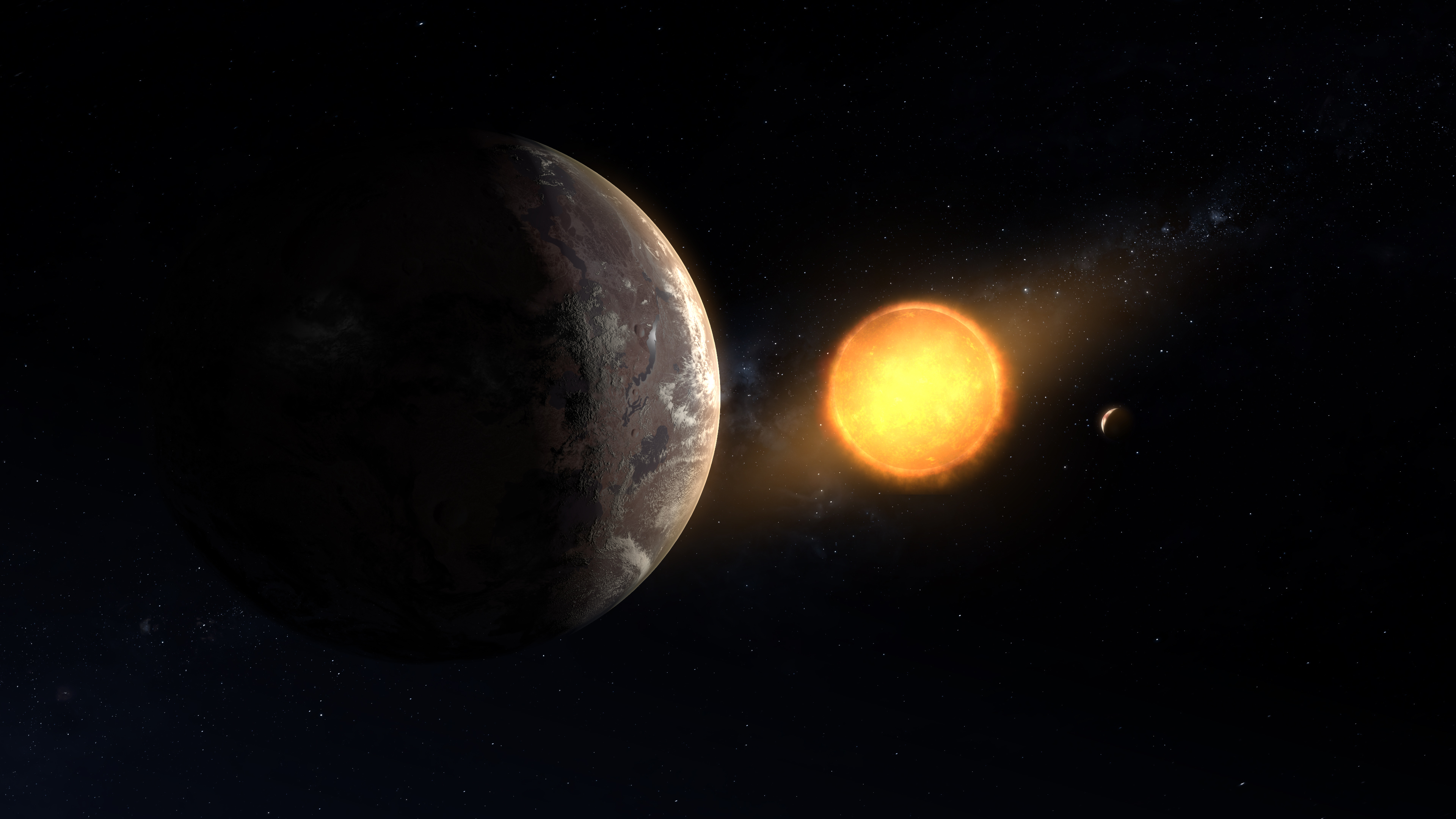|
Kepler-1649
Kepler-1649 is a red dwarf star of spectral type M5V with a radius , a mass , and a metallicity of -0.15 [Fe/H]. Planetary system Two confirmed planets orbit the star: Kepler-1649b and Kepler-1649c. Kepler-1649b is similar to Venus, whereas Kepler-1649c is a List of potentially habitable exoplanets, potentially habitable exoplanet similar to Earth. References M-type main-sequence stars Kepler objects of interest Cygnus (constellation) TIC objects {{red-dwarf-stub ... [...More Info...] [...Related Items...] OR: [Wikipedia] [Google] [Baidu] |
Kepler-1649c
Kepler-1649c is an Earth-sized exoplanet, likely terrestrial planet, rocky, orbiting within the habitable zone of the red dwarf star Kepler-1649, the outermost planet of the planetary system discovered by ''Kepler’s'' space telescope. It is located about away from Earth, in the constellation of Cygnus (constellation), Cygnus. Kepler-1649c orbits its star a distance of from its host star with an orbital period of roughly 19.53 days, has a mass 1.2x times that of Earth, and has a radius of around 1.02 times that of Earth. Based on its mass and radius, it is likely a terrestrial planet, though its proximity to its star means it may likely be tidally locked. Kepler-1649c is estimated to receive about three-quarters of radiation from its host star as Earth does from the Sun. In 2017, Jeff Coughlin, the director of Search for extraterrestrial intelligence, SETI's K2 Science Office, described it as the most "similar planet to Earth" found so far by the Kepler space telescope, Kepler ... [...More Info...] [...Related Items...] OR: [Wikipedia] [Google] [Baidu] |
List Of Potentially Habitable Exoplanets
This is a list of potentially habitable exoplanets. The list is mostly based on estimates of habitability by the Habitable Exoplanets Catalog (HEC), and data from the NASA Exoplanet Archive. The HEC is maintained by the Planetary Habitability Laboratory at the University of Puerto Rico at Arecibo. There is also a speculative list being developed of superhabitable planets. Surface planetary habitability is thought to require orbiting at the right distance from the host star for liquid surface water to be present, in addition to various geophysical and geodynamical aspects, atmospheric density, radiation type and intensity, and the host star's plasma environment. List This is a list of exoplanets within the circumstellar habitable zone that are under 10 Earth masses and smaller than 2.5 Earth radii, and thus have a chance of being rocky. Note that inclusion on this list does not guarantee habitability, and in particular the larger planets are unlikely to have a rocky composition. ... [...More Info...] [...Related Items...] OR: [Wikipedia] [Google] [Baidu] |
Cygnus (constellation)
Cygnus is a northern constellation on the plane of the Milky Way, deriving its name from the Latinized Greek word for swan. Cygnus is one of the most recognizable constellations of the northern summer and autumn, and it features a prominent asterism known as the Northern Cross (in contrast to the Southern Cross). Cygnus was among the 48 constellations listed by the 2nd century astronomer Ptolemy, and it remains one of the 88 modern constellations. Cygnus contains Deneb (ذنب, translit. ''ḏanab,'' tail)one of the brightest stars in the night sky and the most distant first-magnitude staras its "tail star" and one corner of the Summer Triangle. It also has some notable X-ray sources and the giant stellar association of Cygnus OB2. Cygnus is also known as the Northern Cross. One of the stars of this association, NML Cygni, is one of the largest stars currently known. The constellation is also home to Cygnus X-1, a distant X-ray binary containing a supergiant and unseen m ... [...More Info...] [...Related Items...] OR: [Wikipedia] [Google] [Baidu] |
Main Sequence
In astronomy, the main sequence is a continuous and distinctive band of stars that appears on plots of stellar color versus brightness. These color-magnitude plots are known as Hertzsprung–Russell diagrams after their co-developers, Ejnar Hertzsprung and Henry Norris Russell. Stars on this band are known as main-sequence stars or dwarf stars. These are the most numerous true stars in the universe and include the Sun. After condensation and ignition of a star, it generates thermal energy in its dense core region through nuclear fusion of hydrogen into helium. During this stage of the star's lifetime, it is located on the main sequence at a position determined primarily by its mass but also based on its chemical composition and age. The cores of main-sequence stars are in hydrostatic equilibrium, where outward thermal pressure from the hot core is balanced by the inward pressure of gravitational collapse from the overlying layers. The strong dependence of the rate of energy ge ... [...More Info...] [...Related Items...] OR: [Wikipedia] [Google] [Baidu] |
Red Dwarf
''Red Dwarf'' is a British science fiction comedy franchise created by Rob Grant and Doug Naylor, which primarily consists of a television sitcom that aired on BBC Two between 1988 and 1999, and on Dave since 2009, gaining a cult following. The series follows low-ranking technician Dave Lister, who awakens after being in suspended animation for three million years to find that he is the last living human, and that he is alone on the mining spacecraft ''Red Dwarf''—save for a hologram his deceased bunkmate Arnold Rimmer and "Cat", a life form which evolved from Lister's pregnant cat. As of 2020, the cast includes Chris Barrie as Rimmer, Craig Charles as Lister, Danny John-Jules as Cat, Robert Llewellyn as the sanitation droid Kryten, and Norman Lovett as the ship's computer, Holly. To date, twelve series of the show have aired, (including one miniseries), in addition to a feature-length special ''The Promised Land''. Four novels were published from 1989 to 1996. Two pilot ep ... [...More Info...] [...Related Items...] OR: [Wikipedia] [Google] [Baidu] |



